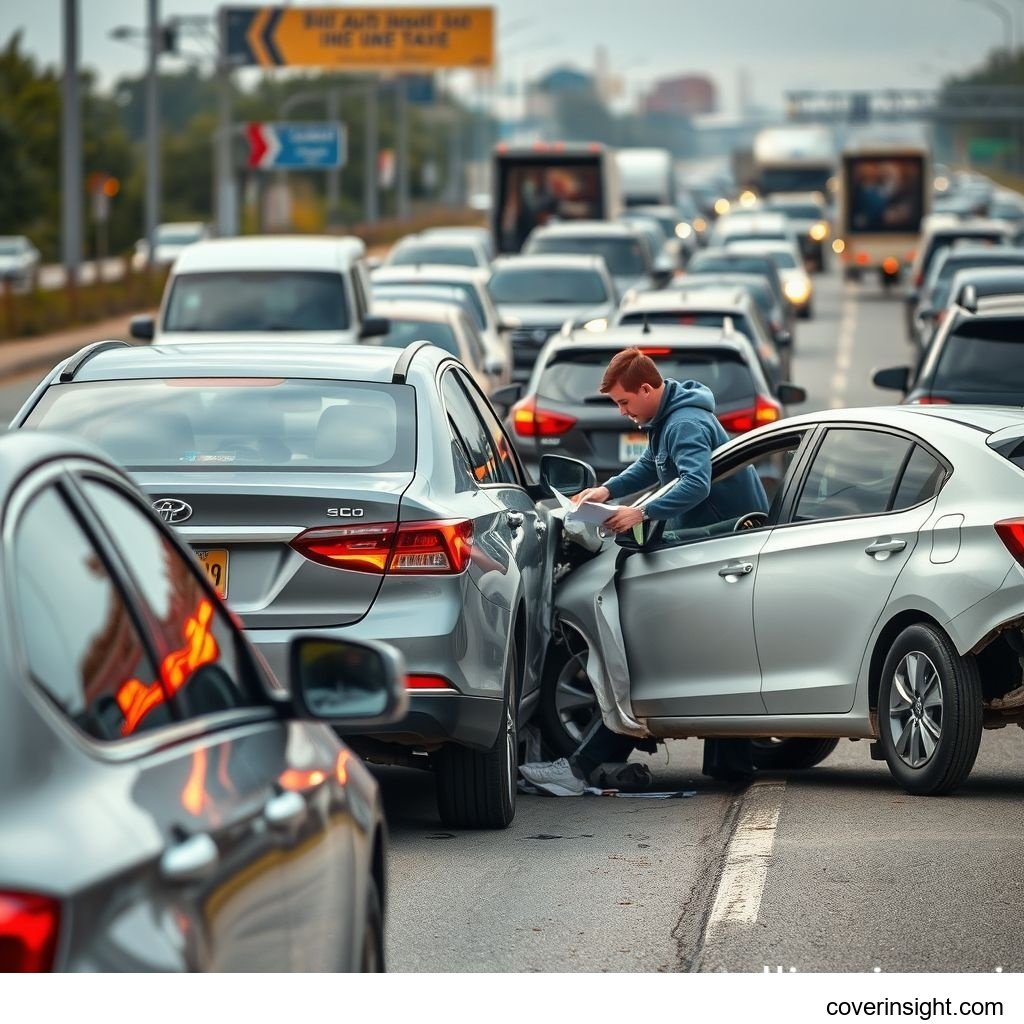Best US Auto Insurance 2025: Find Your Perfect Policy
Introduction
As we look towards 2025, understanding the landscape of the best auto insurance companies in the US is more crucial than ever. The choices you make today will profoundly impact your financial security on the road tomorrow. Whether you're a seasoned driver or a new car owner, finding the right policy isn't just about ticking a box – it's about safeguarding your assets, ensuring peace of mind, and navigating the unexpected twists and turns of life with confidence. This guide aims to cut through the noise, helping you identify top-tier providers and tailor a policy that perfectly fits your needs and budget.
Coverage Details
Navigating auto insurance can sometimes feel like deciphering a foreign language, but understanding what's included and excluded is key to making an informed decision.
What’s Included
The best auto insurance policies offer a comprehensive suite of protections designed to cover various scenarios.
-
Liability Coverage: This is the bedrock of most policies, typically mandated by state law. It protects you financially if you're at fault in an accident, covering bodily injury to others and property damage to their vehicle or other assets. It ensures you're not left holding the bag for someone else's medical bills or car repairs.
-
Collision Coverage: This pays for damages to your own vehicle resulting from a collision with another car or object, regardless of who is at fault. It’s particularly valuable for newer or financed cars.
-
Comprehensive Coverage: Often paired with collision, comprehensive covers non-collision incidents like theft, vandalism, fire, natural disasters (hail, floods), and impacts with animals. It’s your safety net for those "act of God" moments.
-
Uninsured/Underinsured Motorist (UM/UIM) Coverage: A vital component, UM/UIM protects you if you're hit by a driver who has no insurance or not enough insurance to cover your damages. Given that many drivers are on the road without adequate coverage, this can be a lifesaver. For more extensive information on global insurance provisions, you might explore various [Insurance Resources Global].
-
Medical Payments (MedPay) / Personal Injury Protection (PIP): These cover medical expenses for you and your passengers after an accident, regardless of fault. PIP, common in "no-fault" states, can also cover lost wages and essential services.
Common Exclusions
While policies aim to cover a broad spectrum, certain situations are typically excluded:
-
Intentional Damage: If you intentionally cause damage to your vehicle or another's, it won't be covered.
-
Racing or Illegal Activities: Using your car for racing, stunts, or in the commission of a crime generally voids coverage.
-
Wear and Tear: Routine maintenance issues, mechanical breakdowns, or gradual deterioration are not covered by standard auto insurance.
-
Custom Equipment: Unless specifically endorsed, aftermarket modifications like custom sound systems or specialized rims may not be fully covered.
-
Using Your Vehicle for Hire: If you're using your personal vehicle for ride-sharing (e.g., Uber, Lyft) or delivery services without a specific rideshare endorsement, an accident might not be covered under your personal policy.
Cost Analysis
Understanding what influences your premium and how to save money is crucial when shopping for the best auto insurance.
Price Factors
Auto insurance premiums are determined by a complex algorithm that considers various risk factors:
-
Your Driving Record: Accidents, traffic violations, and DUIs significantly increase your rates. A clean record is your best friend.
-
Vehicle Type: More expensive cars, sports cars, or vehicles with higher theft rates often come with higher premiums.
-
Location: Urban areas with higher traffic density, crime rates, and accident statistics typically have higher rates than rural areas. For instance, according to data from the National Association of Insurance Commissioners (NAIC), the average expenditure for private passenger auto insurance in the U.S. was $1,280.95 in 2022, but this figure can vary wildly state-by-state, with some states seeing average premiums well over $2,000.
-
Age and Gender: Younger, less experienced drivers, especially males, generally face higher premiums due to higher accident risks.
-
Credit Score: In many states, your credit-based insurance score (which correlates with financial responsibility) can influence your premium.
-
Coverage Limits and Deductibles: Choosing higher liability limits or lower deductibles will increase your premium, as the insurer takes on more risk.
-
Mileage: The less you drive, the lower your risk of an accident, often leading to lower premiums.
Saving Tips
Smart choices can lead to significant savings:
-
Shop Around: Don't settle for the first quote. Get quotes from multiple providers to compare "apples to apples" coverage. Checking with your [State Insurance Departments] can also provide valuable local comparison tools.
-
Bundle Policies: Many insurers offer discounts for bundling auto insurance with home, renters, or life insurance. This can be a great way to get more bang for your buck. For a holistic view of US insurance needs, including health, [Healthcare.gov] is a useful resource for exploring options beyond auto.
-
Maintain a Good Driving Record: Avoid accidents and tickets. Many companies offer "good driver" or "accident-free" discounts.
-
Increase Your Deductible: If you can afford to pay more out-of-pocket in the event of a claim, raising your deductible can lower your monthly premium.
-
Look for Discounts: Ask about discounts for defensive driving courses, good student grades, low mileage, anti-theft devices, or paying your premium in full.
-
Improve Your Credit Score: A better credit score can lead to lower rates in states where it's a rating factor.
-
Consider Usage-Based Insurance: Devices that monitor your driving habits (telematics) can offer discounts for safe drivers.
FAQs
How much does best auto insurance companies 2024 cost?
The cost of auto insurance varies dramatically based on numerous factors like your location, driving history, vehicle type, and the coverage you choose. While the national average was around $1,280.95 in 2022, according to NAIC data, some drivers pay significantly less, while others in high-risk areas or with poor driving records might pay several thousand dollars annually. The best way to know is to get personalized quotes.
What affects premiums?
Premiums are influenced by your driving record, the type of car you drive, your age, your credit score (in most states), where you live, and the specific coverage limits and deductibles you select. Factors like claims history in your area and even local weather patterns can play a role.
Is it mandatory?
Yes, in almost every U.S. state, it is mandatory to have at least a minimum amount of liability auto insurance coverage. New Hampshire is a notable exception, though drivers there must prove financial responsibility. You can find state-specific requirements by visiting your [US Insurance Home] state portal.
How to choose?
Choosing the best auto insurance involves balancing cost with comprehensive coverage and a reliable insurer. Start by assessing your needs (e.g., value of your car, assets to protect), compare quotes from multiple providers, check customer service ratings and claims handling reviews, and look for available discounts. It’s all about finding the right fit, not just the lowest price.
Consequences of no coverage?
Driving without mandatory auto insurance can lead to severe consequences, including fines, license suspension, vehicle impoundment, and even jail time in some states. More critically, if you're involved in an accident and don't have coverage, you could be personally responsible for thousands—or even hundreds of thousands—of dollars in damages and medical bills. This financial hit could be crippling. For instance, consider the case of a young driver in rural Georgia who, after hitting a deer, realized his lapse in comprehensive coverage meant he was on the hook for a $7,000 repair bill for his pickup truck. Or imagine a family in Texas who avoided financial ruin after a multi-car pileup only because their robust uninsured motorist coverage kicked in, covering their medical expenses when the at-fault driver fled the scene. These real-world examples underscore the invaluable safety net insurance provides.
Author Insight & Experience: As someone living in the US who has navigated the ever-changing tides of auto insurance, I’ve learned that the "best" policy isn't a one-size-fits-all solution. It's truly about dotting your i's and crossing your t's to understand your specific needs, then tirelessly comparing options. My personal experience has shown me that sometimes, paying a little extra for robust uninsured/underinsured motorist coverage is a smart move, even if it feels like an added expense upfront. It’s the kind of protection you hope you never need, but are eternally grateful for if you do. Don't be penny wise and pound foolish when it comes to safeguarding your financial future on the open road.
Further reading: Insurance Resources Global
Further reading: US Insurance Home








Comments